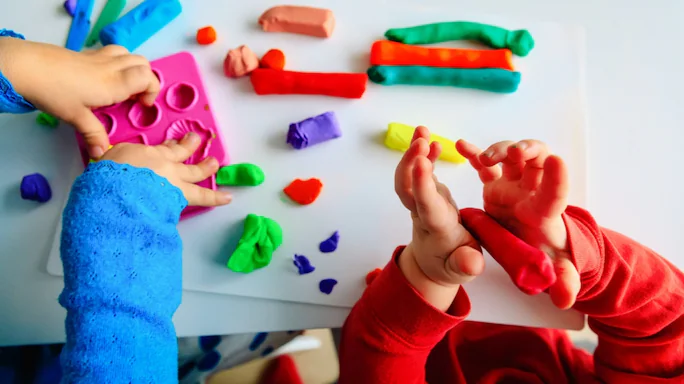Sensory Learning Made Fun with Play-Doh!
As parents, guardians, and educators, we are constantly looking for ways to give our children the best possible start in life. One of the most effective ways to achieve this goal is through sensory learning. Sensory learning refers to the process of engaging the five senses in order to facilitate the development of motor, social, and communication skills in young children.
While there are many different types of sensory learning activities, one of the most popular and effective is the use of Play-Doh. Play-Doh is a type of modeling clay that can be molded into a variety of shapes and designs. It is non-toxic, easy to manipulate, and is available in a range of colors and textures.
Let’s explore the benefits of Play-Doh in sensory learning activities, discover practical examples of sensory activities using Play-Doh, and understanding the importance of incorporating Play-Doh activities as a key part of a child’s education and development.


The Benefits of Sensory Learning
Before we dive into the specifics of sensory learning with Play-Doh, let’s take a moment to explore the benefits of sensory learning in general. Numerous studies have shown that sensory learning can have a positive impact on a child’s development, specifically in the areas of motor, social, and communication skills.
Motor Skills: Sensory learning encourages children to experiment with different textures, shapes, and materials, which in turn develops their fine motor skills. Fine motor skills are essential for everyday activities such as dressing, writing, and using utensils.
Social Skills: Sensory learning activities provide an opportunity for children to work together and share ideas. This promotes teamwork and cooperation, which are important social skills that children will need throughout their lives.
Communication Skills: Sensory learning also promotes language development by encouraging children to describe what they are experiencing using words. This helps to build their vocabulary and improve their communication skills.
Play-Doh in Sensory Learning Activities
Now that we’ve established the benefits of sensory learning, let’s dive into the specifics of using Play-Doh in sensory learning activities.
Texture Exploration
One of the simplest sensory activities using Play-Doh is texture exploration. Begin by providing children with a variety of Play-Doh colors and textures (e.g. smooth, bumpy, glittery). Encourage them to explore the different textures by squeezing, stretching, and molding the Play-Doh. Ask them to describe how each texture feels and what it reminds them of. This activity can help to develop children’s fine motor skills, as well as their vocabulary and descriptive language skills.
Alphabet and Number Practice
Another great way to incorporate Play-Doh into sensory learning is by using it for alphabet and number practice. Provide children with Play-Doh and ask them to mold the letters and numbers. As they work, encourage them to say the names of each letter and number out loud. This activity can help to develop children’s fine motor skills, as well as their recognition and pronunciation of letters and numbers.
Storytelling & Creativity
Play-Doh can also be an incredibly effective tool for encouraging creativity and storytelling. Provide children with a variety of Play-Doh colors and encourage them to create a scene or story using the materials. For example, they might create a garden scene with flowers, vegetables, and insects, or they might create a scene from their favorite fairy tale. As they work, encourage them to describe their scene or story using language and storytelling techniques. This activity can help to develop children’s creativity, storytelling abilities, and vocabulary.
Emotions and Feelings
Finally, Play-Doh can be a great tool for helping children to explore their emotions and feelings. Provide children with different colors of Play-Doh and ask them to mold a shape that represents how they are feeling. For example, they might mold a ball to represent anger or a heart to represent love. As they work, encourage them to describe why they chose that particular shape and what it represents. This activity can help to develop children’s emotional intelligence and their ability to identify and express their feelings.
In conclusion, Play-Doh is an incredibly versatile and effective tool for sensory learning activities. Whether you are looking to develop your child’s motor, social, and communication skills, encourage their creativity and storytelling abilities, or explore their emotions and feelings, Play-Doh can be a powerful tool for achieving your goals.
By incorporating Play-Doh activities into your child’s education and development, you can help to set them up for success both in the classroom and in everyday life. So why not grab a few containers of Play-Doh and get started today? Your child’s future self will thank you!
